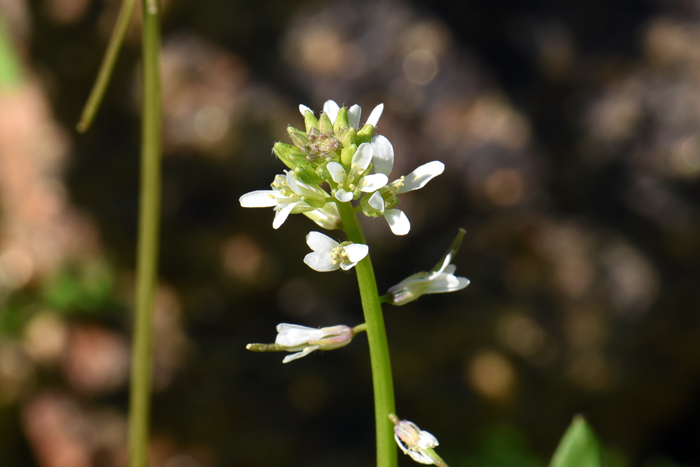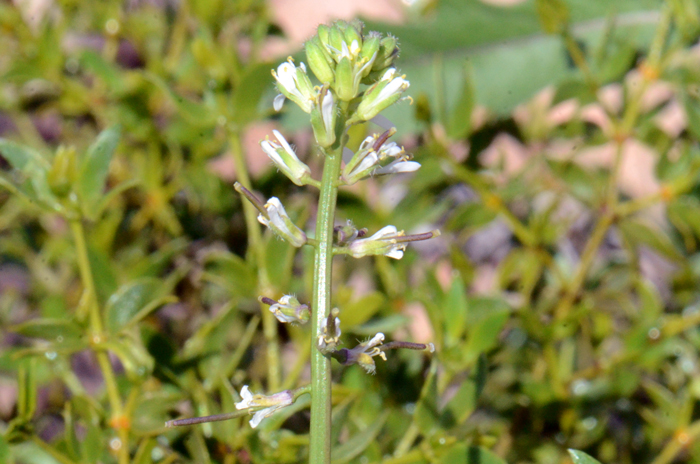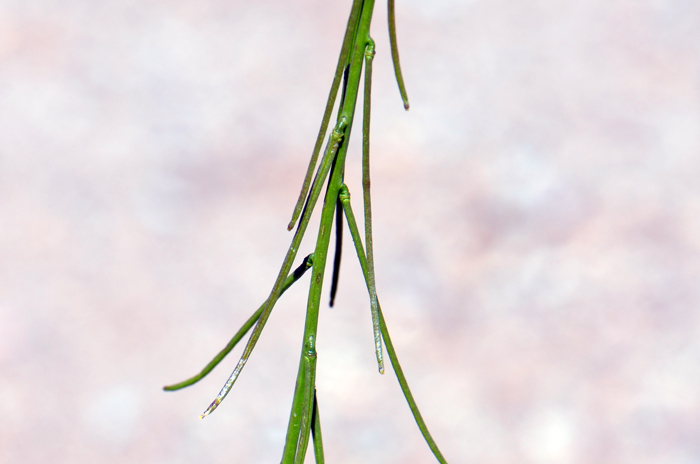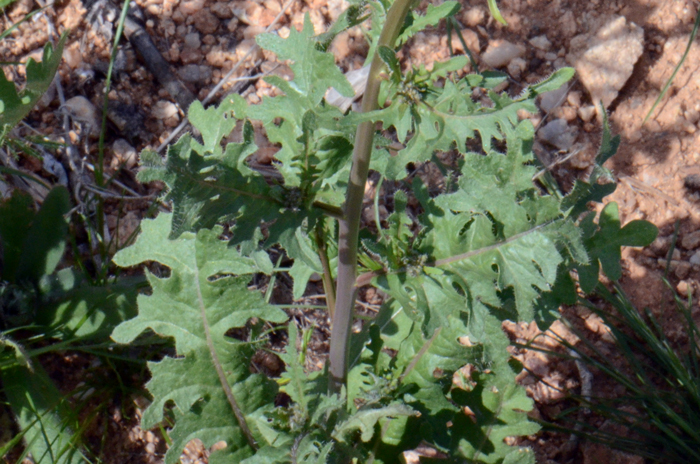Caulanthus lasiophyllus, California Mustard




Scientific Name: Caulanthus lasiophyllus
Common Name: California Mustard
Also Called: Coast Range Wild Cabbage, Coast Wild Cabbage, Hairyleaf Wildcabbage, Slenderpod Jewelflower
Family: Brassicaceae, Mustard Family
Synonyms: (Caulanthus lasiophyllus, Caulanthus lasiophyllus var. rigidus, Caulanthus lasiophyllus var. utahensis, Caulanthus stenocarpus, Thelypodium lasiophyllum, Thelypodium lasiophyllum var. inalienum, Thelypodium lasiophyllum var. rigidum , Thelypodium lasiophyllum var. utahense, Thelypodium rigidum Greene, Thelypodium utahense)
Status: Native
Duration: Annual
Size: 7 to 39 inches (17-100 cm) and larger.
Growth Form: Forb/herb; thin stems erect, without branches or branches toward the top (distally); plants sparsely to densely stiff-hairy (hispid);
Leaves: Green; lower leaves (basal) soon wither and upper stem leaves (cauline) with small stalks (petiolate); blades lanceolate to oblong or oblanceolate, leaves generally with long lobes (pinnately lobed) and toothed (dentate) leaves surrounding the base of the plant and smaller leaves lining the stem.
Flower Color: White, creamy or yellow; flowers on an unbranched raceme; erect green sepals, petals white to creamy white, possibly pink; fruits a flat, long and narrow silique up to 7 cm long generally hanging downward from the stem, however fruits may also be erect or ascending; seeds yellowish or brownish, oblong.
Flowering Season: March to May or June.
Elevation: Sea level to 8,500 feet (2,600 m) feet.
Habitat Preferences: Dry, open areas, particularly disturbed areas, desert flats, sandy banks, hillsides, gravelly or rocky areas, ravines, limestone rocks, rock debris at base of cliffs (talus slopes); shrublands and grassy fields.
Recorded Range: California Mustard is found in the southwestern United States and WA and OR; into British Columbia and south to northwestern Mexico and Baja California, Sonora.
North America & US County Distribution Map for Caulanthus lasiophyllus as: Guillenia lasiophylla.
U.S. Weed Information: No information available.
Invasive/Noxious Weed Information: No information available.
Wetland Indicator: No information available.
Threatened/Endangered Information: In North America Slender-Pod Jewelflower is listed by the State of California as Endangered as Caulanthus stenocarpus. Note: As there is extreme variation in this species, Caulanthus stenocarpus is possibly another species of Jewelflower and not a synonym.
The genus Caulanthus was published by by Sereno Watson in 1871.
In the Southwestern United States: Arizona has 1 species of Caulanthus, California has 14 species, Nevada has 6 species, New Mexico has 0 species, Texas has 0 species, Utah has 4 species. All data approximate and subject to revision.
Comments: California Mustard has a lot of variation in key characteristics in plant height, flower size, reproductive parts, leaf morphology, hair density and fruit.The species epithet "lasiophyllus" (lasiophyl'la/lasiophyl'lus:) means woolly-leaved.

